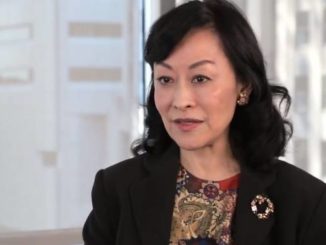
As2012 made its exit, it left two horrific tragedies in its wake: the massacre of 26 students and teachers in my country of residence, the US, and the gang rape of a medical student in my country of citizenship. The two tragedies produced markedly contrasting reactions by leaders and people in the two countries, however. The relatively young African-American president of the US instantly connected with the tragedy and its immediate victims in Newtown, Connecticut. Addressing the nation the very same day on the television, the normally steely President Barack Obama could be seen wiping tears multiple times. “We’ve endured too many of these tragedies in the past few years, and each time I hear the news I react not as a president but as anyone else would, as a parent,” he said.
Two days later, the president travelled to Connecticut to be with the families of the victims. In New Delhi, the aging leadership greeted the news of the gang rape with total indifference. Having deliberately insulated itself for years from the reality that real people with real problems live in the cities too, it went about business as usual. It was a full week of swelling crowds and rising rage of tens of thousands of men and women in the streets that finally led the Prime Minister’s Office to break its silence. Even then, the December 23 statement by it reflected aloofness, opening with the words, ”We are all joined in our concern for the young woman…” The slight personal touch, with this line rephrased as “My wife, my family and I are all joined in our concern…” came only in the terse televised speech by the prime minister the next day. Even more disappointing, as a woman, Congress President Sonia Gandhi was well positioned to offer a healing touch to the families of the two victims and the entire nation. But beyond a brief appearance outside her home to speak with the protesters, no such touch was forthcoming.
As late as December 24, an intransigent home minister Sushil Kumar Shinde refused to meet the protesters at India Gate. Abhijit Mukherjee, the son of the president and a Member of Parliament, added insult to the injury by describing the women demonstrating in the streets as “highly dented and painted”. An entirely different contrast characterized the responses of the ordinary citizens in India and the US. As the news of the ghastly crime spread, tens of thousands of ordinary residents converged on India Gate in Delhi to protest on behalf of the victim and to shake the political class out of its slumber. Remarkably, not only did the protests successfully sustain in Delhi despite suspension of buses and metro trains on key routes, they also spread to many other cities.
And when the victim passed away on December 29, the entire nation chose to abstain from the New Year’s Day celebrations. In contrast, while the Newtown tragedy shook up every American at the personal level, it sparked no mass protests at the White House or the doorstep of the National Rifle Association (NRA). Four massacres of innocent citizens in a school, a shopping mall, a movie theatre and a gurdwara have characterized the first term of President Obama. Easy access to assault weapons has been an important key to each of them. Yet, there have been no sustained protests that would force the hand of the government against the lobbying power of the NRA. A March 2011 proposal would have outlawed the possession of magazines with more than 10 bullets in Connecticut thereby removing from circulation the Bushmaster AR-15 rifle with 30-round magazine that the Newtown shooter used.
But the NRA successfully defeated that proposal. Earlier, in 2009, gun manufacturer Colt had defeated another even weaker reform by threatening to move its facility employing 900 workers to another state. So, sadly, Connecticut ended up trading the possibility of the loss of 900 jobs for 26 lives. Following the latest shootings, the NRA had the audacity to suggest posting armed guards in every school in the country as the solution! “The only thing that stops a bad guy with a gun is a good guy with a gun,” contended its executive vice-president. Yet, no protests against the NRA emerged. Already, American newspapers can be found devoting more space to the tragedy in Delhi than in Newtown. It is this contrast in the way people have reacted to the tragedies that gives greater hope of change in India. Yet, it is important to appreciate that just making punishment yet more stringent will scarcely improve safety. Rape is only one of many manifestations of insecurities that women in urban India experience every day. On literally dozens of trips to Delhi since the early 1980s, my wife has never once felt safe enough to take a taxi on her own from the airport to Mayur Vihar where her sister lives.
While social reform is the ultimate key, the immediate relief must come from effective implementation of existing laws. And, first and foremost, that requires police reform. On the one hand, the police, who are expected to risk their lives every day to secure the lives of all others, must be paid several times their civilian counterparts. On the other hand, they must face substantially greater risk of dismissal, not just temporary suspension, should they fail in their duties.





Be the first to comment